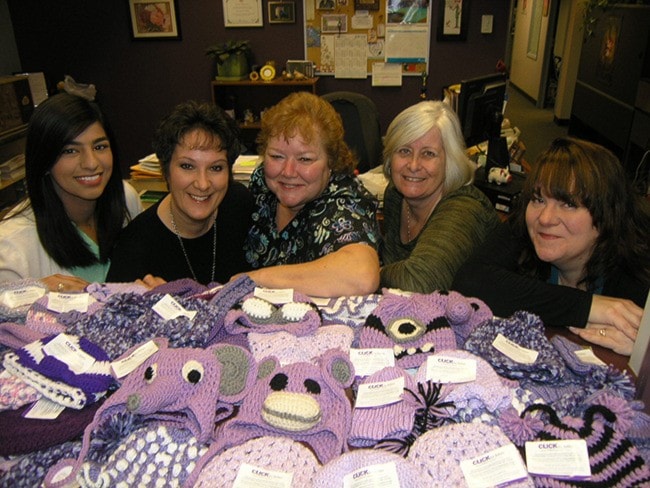Knitters across BC are making purple caps to warm newborns in hospitals and to raise awareness about a Period of PURPLE Crying program.
The program is about the shaken baby syndrome, which is the leading preventable cause of physical and mental disability among infants in B.C.
Knitters in BC are invited to knit purple caps and join the CLICK for Babies awareness campaign, which already has over 8,700 purple caps distributed in maternity hospitals for newborns during November and December.
The program supported by the campaign, Period of PURPLE Crying program, is given to all BC parents before they are discharged from the hospital with a newborn.
It seeks to prevent shaking and abuse and arms caregivers with ways to cope with a crying baby and reduce crying.
It also helps parents and caregivers know that it is normal for infants to go through a PURPLE crying phase, which means the following:
Peak of crying which is during the second month and decreases after that.
Unexpected crying, which comes and goes for babies during this time for no apparent reason.
Resists soothing, which babies will often do as they continue to cry despite all efforts by caregivers.
Pain-like face, which babies make, which makes it look like they are in pain, even when they aren't.
Long lasting, as babies often cry for 30 to 40 minutes or longer.
Evening is usually when this crying occurs, as well as late afternoon.
That phase is normal, temporary and not the fault of the caregiver, and this program seeks to ensure caregivers know that.
Ongoing surveillance since this program started shows the annual number of shaken baby cases in B.C. has decreased by approximately 35 per cent for 0-2 year olds.
